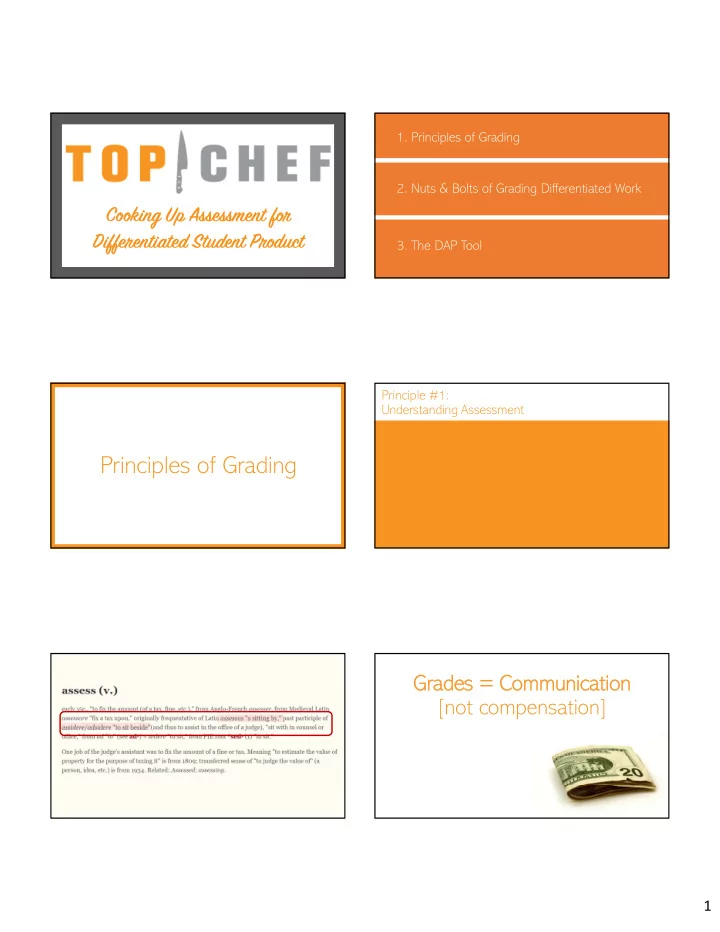

Cooking Up Assessment for Differentiated Student Product 1. Principles of Grading 2. Nuts & Bolts of Grading Differentiated Work 3. The DAP Tool Principle #1: Understanding Assessment Principles of Grading Grades = Communication [not compensation] 1
Principle #2: Students need to feel a balance Use Best Practices in General between effort and success/reward. Grades should be… Formative: evaluated, not graded • Reflective of academic achievement • Connected to standards • Criterion, not norm referenced (note: curves are a no-no) • A balance of types of assignments Summative: evaluated and graded • Communicated in a timely manner • Standards communicated to students beforehand Tomlinson, Theory into Practice We’re comparing students to standards, not Focus on mode (most often) and each other. median (the middle), not mean. 2
Include: Principle #3: All of this can happen… Grades have a margin of error • Poorly written directions • Student didn’t answer the question(s) • Discrepancy between assessment and standard or task • Too little data was gathered – two few data points Principle #4: Take the time to write out your grading philosophy • rubrics • weighting • extra credit/re-do • late work • classwork/homework • # of grades • role/purpose of grading • differentiated work Principle #5: Differentiated grading looks like this… Grades should already be differentiated • Aware & responsive to student differences • Use of preassessment • Clear learning outcomes • Students know criteria for success • Varied forms of assessment 3
feedback. descriptive Offer “ the same .” “ fair ” with confusing Stop not. - Oscar Wilde a good thing for most of us that it is Life is never fair, and perhaps it is quality, *See Principle #1 Nuts & Bolts of Grading We’re only asking this question because we Differentiated Work don’t understand the point of grading. How many of you are worried you’re going to hear this? 4
How can we share grades to motivate & inform? Indicate Formative or Summative in Gradebook Use learning contracts. Use Portfolios. When using compacted instruction, enter the preassessed grade & add bonus points or add entry for differentiated work. 5
I have permission! I have permission! actually 7 levels, because has 0) presentation, creativity, reflection professional The DAP Tool The DAP Tool • 6 point scale (6 highest, • In 4 areas: content, • 3 tiers • May not have 6s because that’s 6
right level Too wordy for students (sometimes too vague) 1 2 3 My thoughts … • Will cause anxiety, so use the scale at the 7
Highest score s/b to the left Don’t need to use all in the grade I like the reflection piece! Learning Styles don’t exist, but it does keep it lively, so understand it’s not neuroscience, but it’s okay to add variety. Creativity is tricky – using the Torrance traits defines it better. Content section is always too vague for my taste, so do your own. 8
Love idea of product resource file! giftedguru.com/la18 9
Recommend
More recommend